- Hydroponics Market By System Type (USD Billion, 2019-2035)
- Nutrient Film Technique
- Deep Water Culture
- Ebb and Flow
- Aeroponics
- Wicking
- Hydroponics Market By Crop Type (USD Billion, 2019-2035)
- Leafy Greens
- Herbs
- Fruits
- Flowers
- Vegetables
- Hydroponics Market By Distribution Channel (USD Billion, 2019-2035)
- Direct Sales
- Retail
- Online Sales
- Wholesale
- Agricultural Cooperatives
- Hydroponics Market By Equipment Type (USD Billion, 2019-2035)
- Grow Lights
- Pumps
- Nutrient Delivery Systems
- Growing Containers
- Controls and Monitors
- Hydroponics Market By Regional (USD Billion, 2019-2035)
- North America
- Europe
- South America
- Asia Pacific
- Middle East and Africa
North America Outlook (USD Billion, 2019-2035)
North America Hydroponics Market by System Type
Nutrient Film Technique
Deep Water Culture
Ebb and Flow
Aeroponics
Wicking
North America Hydroponics Market by Crop Type
Leafy Greens
Herbs
Fruits
Flowers
Vegetables
North America Hydroponics Market by Distribution Channel Type
Direct Sales
Retail
Online Sales
Wholesale
Agricultural Cooperatives
North America Hydroponics Market by Equipment Type
Grow Lights
Pumps
Nutrient Delivery Systems
Growing Containers
Controls and Monitors
North America Hydroponics Market by Regional Type
US
Canada
US Outlook (USD Billion, 2019-2035)
US Hydroponics Market by System Type
Nutrient Film Technique
Deep Water Culture
Ebb and Flow
Aeroponics
Wicking
US Hydroponics Market by Crop Type
Leafy Greens
Herbs
Fruits
Flowers
Vegetables
US Hydroponics Market by Distribution Channel Type
Direct Sales
Retail
Online Sales
Wholesale
Agricultural Cooperatives
US Hydroponics Market by Equipment Type
Grow Lights
Pumps
Nutrient Delivery Systems
Growing Containers
Controls and Monitors
CANADA Outlook (USD Billion, 2019-2035)
CANADA Hydroponics Market by System Type
Nutrient Film Technique
Deep Water Culture
Ebb and Flow
Aeroponics
Wicking
CANADA Hydroponics Market by Crop Type
Leafy Greens
Herbs
Fruits
Flowers
Vegetables
CANADA Hydroponics Market by Distribution Channel Type
Direct Sales
Retail
Online Sales
Wholesale
Agricultural Cooperatives
CANADA Hydroponics Market by Equipment Type
Grow Lights
Pumps
Nutrient Delivery Systems
Growing Containers
Controls and Monitors
Europe Outlook (USD Billion, 2019-2035)
Europe Hydroponics Market by System Type
Nutrient Film Technique
Deep Water Culture
Ebb and Flow
Aeroponics
Wicking
Europe Hydroponics Market by Crop Type
Leafy Greens
Herbs
Fruits
Flowers
Vegetables
Europe Hydroponics Market by Distribution Channel Type
Direct Sales
Retail
Online Sales
Wholesale
Agricultural Cooperatives
Europe Hydroponics Market by Equipment Type
Grow Lights
Pumps
Nutrient Delivery Systems
Growing Containers
Controls and Monitors
Europe Hydroponics Market by Regional Type
Germany
UK
France
Russia
Italy
Spain
Rest of Europe
GERMANY Outlook (USD Billion, 2019-2035)
GERMANY Hydroponics Market by System Type
Nutrient Film Technique
Deep Water Culture
Ebb and Flow
Aeroponics
Wicking
GERMANY Hydroponics Market by Crop Type
Leafy Greens
Herbs
Fruits
Flowers
Vegetables
GERMANY Hydroponics Market by Distribution Channel Type
Direct Sales
Retail
Online Sales
Wholesale
Agricultural Cooperatives
GERMANY Hydroponics Market by Equipment Type
Grow Lights
Pumps
Nutrient Delivery Systems
Growing Containers
Controls and Monitors
UK Outlook (USD Billion, 2019-2035)
UK Hydroponics Market by System Type
Nutrient Film Technique
Deep Water Culture
Ebb and Flow
Aeroponics
Wicking
UK Hydroponics Market by Crop Type
Leafy Greens
Herbs
Fruits
Flowers
Vegetables
UK Hydroponics Market by Distribution Channel Type
Direct Sales
Retail
Online Sales
Wholesale
Agricultural Cooperatives
UK Hydroponics Market by Equipment Type
Grow Lights
Pumps
Nutrient Delivery Systems
Growing Containers
Controls and Monitors
FRANCE Outlook (USD Billion, 2019-2035)
FRANCE Hydroponics Market by System Type
Nutrient Film Technique
Deep Water Culture
Ebb and Flow
Aeroponics
Wicking
FRANCE Hydroponics Market by Crop Type
Leafy Greens
Herbs
Fruits
Flowers
Vegetables
FRANCE Hydroponics Market by Distribution Channel Type
Direct Sales
Retail
Online Sales
Wholesale
Agricultural Cooperatives
FRANCE Hydroponics Market by Equipment Type
Grow Lights
Pumps
Nutrient Delivery Systems
Growing Containers
Controls and Monitors
RUSSIA Outlook (USD Billion, 2019-2035)
RUSSIA Hydroponics Market by System Type
Nutrient Film Technique
Deep Water Culture
Ebb and Flow
Aeroponics
Wicking
RUSSIA Hydroponics Market by Crop Type
Leafy Greens
Herbs
Fruits
Flowers
Vegetables
RUSSIA Hydroponics Market by Distribution Channel Type
Direct Sales
Retail
Online Sales
Wholesale
Agricultural Cooperatives
RUSSIA Hydroponics Market by Equipment Type
Grow Lights
Pumps
Nutrient Delivery Systems
Growing Containers
Controls and Monitors
ITALY Outlook (USD Billion, 2019-2035)
ITALY Hydroponics Market by System Type
Nutrient Film Technique
Deep Water Culture
Ebb and Flow
Aeroponics
Wicking
ITALY Hydroponics Market by Crop Type
Leafy Greens
Herbs
Fruits
Flowers
Vegetables
ITALY Hydroponics Market by Distribution Channel Type
Direct Sales
Retail
Online Sales
Wholesale
Agricultural Cooperatives
ITALY Hydroponics Market by Equipment Type
Grow Lights
Pumps
Nutrient Delivery Systems
Growing Containers
Controls and Monitors
SPAIN Outlook (USD Billion, 2019-2035)
SPAIN Hydroponics Market by System Type
Nutrient Film Technique
Deep Water Culture
Ebb and Flow
Aeroponics
Wicking
SPAIN Hydroponics Market by Crop Type
Leafy Greens
Herbs
Fruits
Flowers
Vegetables
SPAIN Hydroponics Market by Distribution Channel Type
Direct Sales
Retail
Online Sales
Wholesale
Agricultural Cooperatives
SPAIN Hydroponics Market by Equipment Type
Grow Lights
Pumps
Nutrient Delivery Systems
Growing Containers
Controls and Monitors
REST OF EUROPE Outlook (USD Billion, 2019-2035)
REST OF EUROPE Hydroponics Market by System Type
Nutrient Film Technique
Deep Water Culture
Ebb and Flow
Aeroponics
Wicking
REST OF EUROPE Hydroponics Market by Crop Type
Leafy Greens
Herbs
Fruits
Flowers
Vegetables
REST OF EUROPE Hydroponics Market by Distribution Channel Type
Direct Sales
Retail
Online Sales
Wholesale
Agricultural Cooperatives
REST OF EUROPE Hydroponics Market by Equipment Type
Grow Lights
Pumps
Nutrient Delivery Systems
Growing Containers
Controls and Monitors
APAC Outlook (USD Billion, 2019-2035)
APAC Hydroponics Market by System Type
Nutrient Film Technique
Deep Water Culture
Ebb and Flow
Aeroponics
Wicking
APAC Hydroponics Market by Crop Type
Leafy Greens
Herbs
Fruits
Flowers
Vegetables
APAC Hydroponics Market by Distribution Channel Type
Direct Sales
Retail
Online Sales
Wholesale
Agricultural Cooperatives
APAC Hydroponics Market by Equipment Type
Grow Lights
Pumps
Nutrient Delivery Systems
Growing Containers
Controls and Monitors
APAC Hydroponics Market by Regional Type
China
India
Japan
South Korea
Malaysia
Thailand
Indonesia
Rest of APAC
CHINA Outlook (USD Billion, 2019-2035)
CHINA Hydroponics Market by System Type
Nutrient Film Technique
Deep Water Culture
Ebb and Flow
Aeroponics
Wicking
CHINA Hydroponics Market by Crop Type
Leafy Greens
Herbs
Fruits
Flowers
Vegetables
CHINA Hydroponics Market by Distribution Channel Type
Direct Sales
Retail
Online Sales
Wholesale
Agricultural Cooperatives
CHINA Hydroponics Market by Equipment Type
Grow Lights
Pumps
Nutrient Delivery Systems
Growing Containers
Controls and Monitors
INDIA Outlook (USD Billion, 2019-2035)
INDIA Hydroponics Market by System Type
Nutrient Film Technique
Deep Water Culture
Ebb and Flow
Aeroponics
Wicking
INDIA Hydroponics Market by Crop Type
Leafy Greens
Herbs
Fruits
Flowers
Vegetables
INDIA Hydroponics Market by Distribution Channel Type
Direct Sales
Retail
Online Sales
Wholesale
Agricultural Cooperatives
INDIA Hydroponics Market by Equipment Type
Grow Lights
Pumps
Nutrient Delivery Systems
Growing Containers
Controls and Monitors
JAPAN Outlook (USD Billion, 2019-2035)
JAPAN Hydroponics Market by System Type
Nutrient Film Technique
Deep Water Culture
Ebb and Flow
Aeroponics
Wicking
JAPAN Hydroponics Market by Crop Type
Leafy Greens
Herbs
Fruits
Flowers
Vegetables
JAPAN Hydroponics Market by Distribution Channel Type
Direct Sales
Retail
Online Sales
Wholesale
Agricultural Cooperatives
JAPAN Hydroponics Market by Equipment Type
Grow Lights
Pumps
Nutrient Delivery Systems
Growing Containers
Controls and Monitors
SOUTH KOREA Outlook (USD Billion, 2019-2035)
SOUTH KOREA Hydroponics Market by System Type
Nutrient Film Technique
Deep Water Culture
Ebb and Flow
Aeroponics
Wicking
SOUTH KOREA Hydroponics Market by Crop Type
Leafy Greens
Herbs
Fruits
Flowers
Vegetables
SOUTH KOREA Hydroponics Market by Distribution Channel Type
Direct Sales
Retail
Online Sales
Wholesale
Agricultural Cooperatives
SOUTH KOREA Hydroponics Market by Equipment Type
Grow Lights
Pumps
Nutrient Delivery Systems
Growing Containers
Controls and Monitors
MALAYSIA Outlook (USD Billion, 2019-2035)
MALAYSIA Hydroponics Market by System Type
Nutrient Film Technique
Deep Water Culture
Ebb and Flow
Aeroponics
Wicking
MALAYSIA Hydroponics Market by Crop Type
Leafy Greens
Herbs
Fruits
Flowers
Vegetables
MALAYSIA Hydroponics Market by Distribution Channel Type
Direct Sales
Retail
Online Sales
Wholesale
Agricultural Cooperatives
MALAYSIA Hydroponics Market by Equipment Type
Grow Lights
Pumps
Nutrient Delivery Systems
Growing Containers
Controls and Monitors
THAILAND Outlook (USD Billion, 2019-2035)
THAILAND Hydroponics Market by System Type
Nutrient Film Technique
Deep Water Culture
Ebb and Flow
Aeroponics
Wicking
THAILAND Hydroponics Market by Crop Type
Leafy Greens
Herbs
Fruits
Flowers
Vegetables
THAILAND Hydroponics Market by Distribution Channel Type
Direct Sales
Retail
Online Sales
Wholesale
Agricultural Cooperatives
THAILAND Hydroponics Market by Equipment Type
Grow Lights
Pumps
Nutrient Delivery Systems
Growing Containers
Controls and Monitors
INDONESIA Outlook (USD Billion, 2019-2035)
INDONESIA Hydroponics Market by System Type
Nutrient Film Technique
Deep Water Culture
Ebb and Flow
Aeroponics
Wicking
INDONESIA Hydroponics Market by Crop Type
Leafy Greens
Herbs
Fruits
Flowers
Vegetables
INDONESIA Hydroponics Market by Distribution Channel Type
Direct Sales
Retail
Online Sales
Wholesale
Agricultural Cooperatives
INDONESIA Hydroponics Market by Equipment Type
Grow Lights
Pumps
Nutrient Delivery Systems
Growing Containers
Controls and Monitors
REST OF APAC Outlook (USD Billion, 2019-2035)
REST OF APAC Hydroponics Market by System Type
Nutrient Film Technique
Deep Water Culture
Ebb and Flow
Aeroponics
Wicking
REST OF APAC Hydroponics Market by Crop Type
Leafy Greens
Herbs
Fruits
Flowers
Vegetables
REST OF APAC Hydroponics Market by Distribution Channel Type
Direct Sales
Retail
Online Sales
Wholesale
Agricultural Cooperatives
REST OF APAC Hydroponics Market by Equipment Type
Grow Lights
Pumps
Nutrient Delivery Systems
Growing Containers
Controls and Monitors
South America Outlook (USD Billion, 2019-2035)
South America Hydroponics Market by System Type
Nutrient Film Technique
Deep Water Culture
Ebb and Flow
Aeroponics
Wicking
South America Hydroponics Market by Crop Type
Leafy Greens
Herbs
Fruits
Flowers
Vegetables
South America Hydroponics Market by Distribution Channel Type
Direct Sales
Retail
Online Sales
Wholesale
Agricultural Cooperatives
South America Hydroponics Market by Equipment Type
Grow Lights
Pumps
Nutrient Delivery Systems
Growing Containers
Controls and Monitors
South America Hydroponics Market by Regional Type
Brazil
Mexico
Argentina
Rest of South America
BRAZIL Outlook (USD Billion, 2019-2035)
BRAZIL Hydroponics Market by System Type
Nutrient Film Technique
Deep Water Culture
Ebb and Flow
Aeroponics
Wicking
BRAZIL Hydroponics Market by Crop Type
Leafy Greens
Herbs
Fruits
Flowers
Vegetables
BRAZIL Hydroponics Market by Distribution Channel Type
Direct Sales
Retail
Online Sales
Wholesale
Agricultural Cooperatives
BRAZIL Hydroponics Market by Equipment Type
Grow Lights
Pumps
Nutrient Delivery Systems
Growing Containers
Controls and Monitors
MEXICO Outlook (USD Billion, 2019-2035)
MEXICO Hydroponics Market by System Type
Nutrient Film Technique
Deep Water Culture
Ebb and Flow
Aeroponics
Wicking
MEXICO Hydroponics Market by Crop Type
Leafy Greens
Herbs
Fruits
Flowers
Vegetables
MEXICO Hydroponics Market by Distribution Channel Type
Direct Sales
Retail
Online Sales
Wholesale
Agricultural Cooperatives
MEXICO Hydroponics Market by Equipment Type
Grow Lights
Pumps
Nutrient Delivery Systems
Growing Containers
Controls and Monitors
ARGENTINA Outlook (USD Billion, 2019-2035)
ARGENTINA Hydroponics Market by System Type
Nutrient Film Technique
Deep Water Culture
Ebb and Flow
Aeroponics
Wicking
ARGENTINA Hydroponics Market by Crop Type
Leafy Greens
Herbs
Fruits
Flowers
Vegetables
ARGENTINA Hydroponics Market by Distribution Channel Type
Direct Sales
Retail
Online Sales
Wholesale
Agricultural Cooperatives
ARGENTINA Hydroponics Market by Equipment Type
Grow Lights
Pumps
Nutrient Delivery Systems
Growing Containers
Controls and Monitors
REST OF SOUTH AMERICA Outlook (USD Billion, 2019-2035)
REST OF SOUTH AMERICA Hydroponics Market by System Type
Nutrient Film Technique
Deep Water Culture
Ebb and Flow
Aeroponics
Wicking
REST OF SOUTH AMERICA Hydroponics Market by Crop Type
Leafy Greens
Herbs
Fruits
Flowers
Vegetables
REST OF SOUTH AMERICA Hydroponics Market by Distribution Channel Type
Direct Sales
Retail
Online Sales
Wholesale
Agricultural Cooperatives
REST OF SOUTH AMERICA Hydroponics Market by Equipment Type
Grow Lights
Pumps
Nutrient Delivery Systems
Growing Containers
Controls and Monitors
MEA Outlook (USD Billion, 2019-2035)
MEA Hydroponics Market by System Type
Nutrient Film Technique
Deep Water Culture
Ebb and Flow
Aeroponics
Wicking
MEA Hydroponics Market by Crop Type
Leafy Greens
Herbs
Fruits
Flowers
Vegetables
MEA Hydroponics Market by Distribution Channel Type
Direct Sales
Retail
Online Sales
Wholesale
Agricultural Cooperatives
MEA Hydroponics Market by Equipment Type
Grow Lights
Pumps
Nutrient Delivery Systems
Growing Containers
Controls and Monitors
MEA Hydroponics Market by Regional Type
GCC Countries
South Africa
Rest of MEA
GCC COUNTRIES Outlook (USD Billion, 2019-2035)
GCC COUNTRIES Hydroponics Market by System Type
Nutrient Film Technique
Deep Water Culture
Ebb and Flow
Aeroponics
Wicking
GCC COUNTRIES Hydroponics Market by Crop Type
Leafy Greens
Herbs
Fruits
Flowers
Vegetables
GCC COUNTRIES Hydroponics Market by Distribution Channel Type
Direct Sales
Retail
Online Sales
Wholesale
Agricultural Cooperatives
GCC COUNTRIES Hydroponics Market by Equipment Type
Grow Lights
Pumps
Nutrient Delivery Systems
Growing Containers
Controls and Monitors
SOUTH AFRICA Outlook (USD Billion, 2019-2035)
SOUTH AFRICA Hydroponics Market by System Type
Nutrient Film Technique
Deep Water Culture
Ebb and Flow
Aeroponics
Wicking
SOUTH AFRICA Hydroponics Market by Crop Type
Leafy Greens
Herbs
Fruits
Flowers
Vegetables
SOUTH AFRICA Hydroponics Market by Distribution Channel Type
Direct Sales
Retail
Online Sales
Wholesale
Agricultural Cooperatives
SOUTH AFRICA Hydroponics Market by Equipment Type
Grow Lights
Pumps
Nutrient Delivery Systems
Growing Containers
Controls and Monitors
REST OF MEA Outlook (USD Billion, 2019-2035)
REST OF MEA Hydroponics Market by System Type
Nutrient Film Technique
Deep Water Culture
Ebb and Flow
Aeroponics
Wicking
REST OF MEA Hydroponics Market by Crop Type
Leafy Greens
Herbs
Fruits
Flowers
Vegetables
REST OF MEA Hydroponics Market by Distribution Channel Type
Direct Sales
Retail
Online Sales
Wholesale
Agricultural Cooperatives
REST OF MEA Hydroponics Market by Equipment Type
Grow Lights
Pumps
Nutrient Delivery Systems
Growing Containers
Controls and Monitors

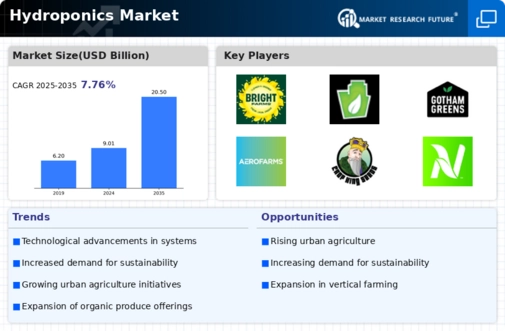
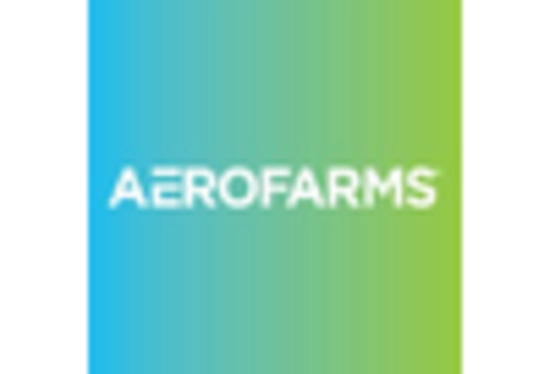
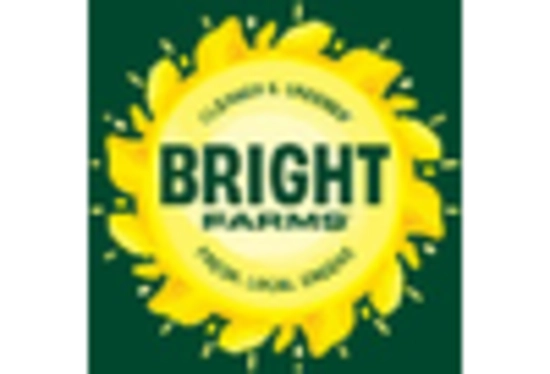
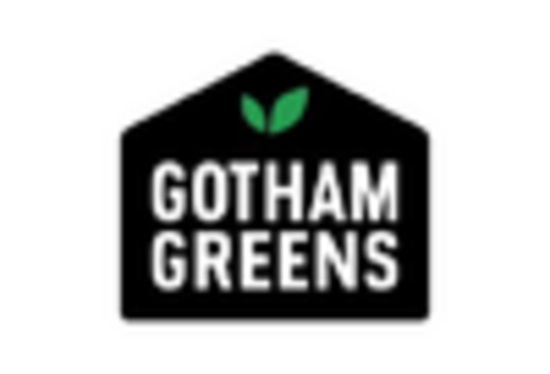
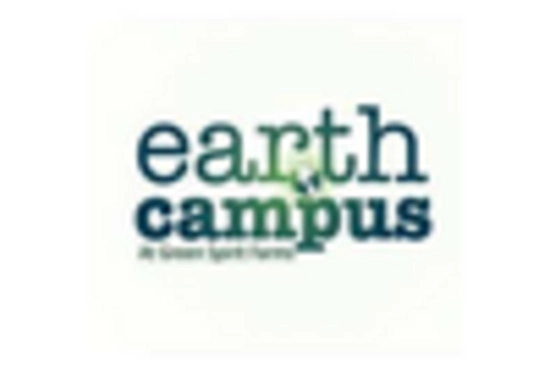
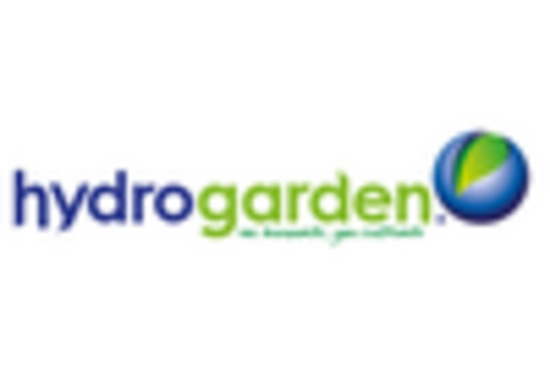
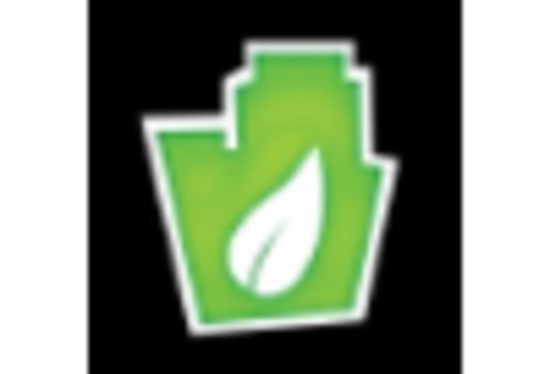









Leave a Comment